Latest recommendations

| Id | Title | Authors | Abstract▼ | Picture | Thematic fields | Recommender | Reviewers | Submission date | |
|---|---|---|---|---|---|---|---|---|---|
15 Dec 2020
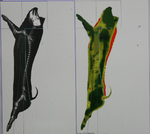
Accuracy of predicting chemical body composition of growing pigs using dual-energy X-ray absorptiometryClaudia Kasper, Patrick Schlegel, Isabel Ruiz-Ascacibar, Peter Stoll, Giuseppe Bee https://doi.org/10.1101/2020.09.15.286153Accurate predictions of chemical composition of pigs for a wide range of body weights: no longer a myth!Recommended by Florence Gondret based on reviews by Mathieu Monziols and 1 anonymous reviewerAssessing body or carcass composition in growing pigs is essential to refine nutritional models, select for specific traits and evaluate pork products. The gold standard methods are dissection and chemical measurements, which are time-consuming and invasive ways to obtain the data. Different teams have tested dual-energy x-ray absorptiometry (DEXA), especially for determining total and regional body composition of fat, soft lean tissues and bone minerals [1-3]. The DEXA measurements are quick, non-invasive, precise, and operator independent. However, the instruments from different manufacturers are unique in implementation so that it is difficult to obtain and share generalized equations. In addition, the validity and accuracy of the measures when applied to pigs having very different composition have been scarcely addressed.
The present manuscript shows that carcass analysis by DEXA can be used to predict empty body chemical composition, and it provides accuracy values for the content in single nutrients (protein, lipids, Ca, P). The body weight range used to generate differences in body composition is very large (20 to 100 kg), which is important when studying pigs along growth. Moreover, regression equations within weight classes (20, 60 and 100 kg) show no important biases, with the exception for body fat especially at the earliest growth stages. Limitations of the technique are the needs of anesthesia when applied to living pigs, and of standardizing the positions of body, carcass and cuts when applied to living or dissected pigs. Another originality of the manuscript is the comparison of the obtained calibrations with previously published prediction models, showing that the differences do not preclude the possibility to use a single model when built from a meta-analysis of the different data. Taken together, this work offers good perspectives to refine nutritional models by inputs from rapidly analyzed body chemical composition and to monitor body and carcass composition in several pigs for genetics applications.
References [1] Mitchell AD., Scholz AM., Pursel VG., and Evock-Clover CM. (1998). Composition analysis of pork carcasses by dual-energy x-ray absorptiometry. Journal of Animal Science. 76(8), 2104-14. https://doi.org/10.2527/1998.7682104x [2] Marcoux M., Bernier JF., and Pomar C. (2003). Estimation of Canadian and European lean yields and composition of pig carcasses by dual-energy X-ray absorptiometry. Meat Science. 63(3), 359-65. https://doi.org/10.1016/S0309-1740(02)00094-3 [3] Kipper M., Marcoux M., Andretta I., and Pomar C. (2018). Repeatability and reproducibility of measurements obtained by dual-energy X-ray absorptiometry on pig carcasses. Journal of Animal Science, 96(5), 2027-2037. https://doi.org/10.1093/jas/skx046 " | Accuracy of predicting chemical body composition of growing pigs using dual-energy X-ray absorptiometry | Claudia Kasper, Patrick Schlegel, Isabel Ruiz-Ascacibar, Peter Stoll, Giuseppe Bee | <p>Studies in animal science assessing nutrient and energy efficiency or determining nutrient requirements necessitate gathering exact measurements of body composition or body nutrient contents. Wet chemical analysis methods or standardized dissec... |  | Agricultural sustainability, Animal nutrition modelling, Monogastrics, Physiology, Pig nutrition | Florence Gondret | 2020-09-17 10:44:58 | View | |
09 Apr 2022
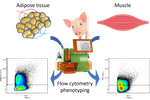
The impact of housing conditions on porcine mesenchymal stromal/stem cell populations differ between adipose tissue and skeletal muscleAudrey Quéméner, Frédéric Dessauge, Marie-Hélène Perruchot, Nathalie Le Floc’h, Isabelle Louveau https://doi.org/10.1101/2021.06.08.447546Housing conditions affect cell populations in adipose and muscle tissues of pigsRecommended by Hervé Acloque based on reviews by 2 anonymous reviewersThe adaptability of livestock to changing environments is based in particular on their genetic characteristics but also on the farming conditions to which they are subjected. However, this last point is poorly documented and little is known about its contribution to environmental challenges. The study by Quéméner and colleagues [1] addresses this question by assessing the effect of two hygiene conditions (good vs poor) on the distribution of cell populations present in adipose and muscle tissues of pigs divergently selected for feed efficiency [2]. The working hypothesis is that degraded housing conditions would be at the origin of an hyper stimulation of the immune system that can influence the homeostasis of adipose tissue and skeletal muscle and consequently modulate the cellular content of these tissues. Cellular compositions are thus interesting intermediate phenotypes for quantifying complex traits. The study uses pigs divergently selected for residual feed intake (RFI+ and RFI-) to assess whether there is a genetic effect associated with the observed phenotypes. The study characterized different stromal cell populations based on the expression of surface markers: CD45 to separate hematopoietic lineages and markers associated with the stem properties of mesenchymal cells: CD56, CD34, CD38 and CD140a. The authors observed that certain subpopulations are differentially enriched according to the hygiene condition (good vs poor) in adipose and skeletal tissue (CD45-CD56-) sometimes with an associated (genetic) lineage effect. This pioneering study validates a number of tools for characterizing cell subpopulations present in porcine adipose and muscle tissue. It confirms that housing conditions can have an effect on intermediate phenotypes such as intra-tissue cell populations. This pioneering work will pave the way to better understand the effects of livestock systems on tissue biology and animal phenotypes and to characterize the nature and function of progenitor cells present in muscle and adipose tissue. [1] Quéméner A, Dessauge F, Perruchot MH, Le Floc’h N, Louveau I. 2022. The impact of housing conditions on porcine mesenchymal stromal/stem cell populations differ between adipose tissue and skeletal muscle. bioRxiv 2021.06.08.447546, ver. 3 peer-reviewed and recommended by Peer Community in Animal Science. https://doi.org/10.1101/2021.06.08.447546 [2] Gilbert H, Bidanel J-P, Gruand J, Caritez J-C, Billon Y, Guillouet P, Lagant H, Noblet J, Sellier P. 2007. Genetic parameters for residual feed intake in growing pigs, with emphasis on genetic relationships with carcass and meat quality traits. Journal of Animal Science 85:3182–3188. https://doi.org/10.2527/jas.2006-590. | The impact of housing conditions on porcine mesenchymal stromal/stem cell populations differ between adipose tissue and skeletal muscle | Audrey Quéméner, Frédéric Dessauge, Marie-Hélène Perruchot, Nathalie Le Floc’h, Isabelle Louveau | <p><strong>Background.</strong> In pigs, the ratio between lean mass and fat mass in the carcass determines production efficiency and is strongly influenced by the number and size of cells in tissues. During growth, the increase in the number of c... |  | Monogastrics, Physiology, Veterinary science | Hervé Acloque | 2021-06-08 17:34:54 | View | |
05 Jul 2022

Impact of pre-breeding feeding practices on rabbit mammary gland development at mid-pregnancy.Cathy Hue-Beauvais, Karine Bebin, Raphael Robert, Delphine Gardan-Salmon, Mickael Maupin, Nicolas Brun, Etienne Aujean, Florence Jaffrezic, Steve Simon, Madia Charlier, Fabienne Le Provost https://doi.org/10.1101/2022.01.17.476562Managing the feeding of rabbits to improve metabolic efficiencyRecommended by Giuseppe Conte based on reviews by Marion Boutinaud, Davi Savietto and 1 anonymous reviewerA correct execution of feeding plan for growing rabbit decreases the possibility of post-weaning digestive disorders, thus enhancing the feed efficiency in the animals. However, a limitation of feed daily quantity is required between 10 weeks of age and the first artificial insemination. This limitation causes energy deficiency with a consequent reduction in fertility. Beauvais et al. (2022) studied the impact of feed restriction strategies in female rabbits. Four feed restriction strategies were applied in two distinct periods (post-weaning and puberty) and evaluated by different physiological parameters (growth rate, metabolic profiles, reproductive parameters and mammary gland development). In the first part of the paper, the authors evaluated the association between weight slopes and feeding strategies in the late post-weaning and peripartum period in the four groups. As revealed by the authors, a significant difference was observed during the late post-weaning period, which remained significant between the pubertal and fattening phases. Probably these differences are related to the restriction feeding pattern. The results indicated that restrictive feeding changes in the first step of post-weaning period is associated with a significant difference in body weight. This difference occurs from the third week of diet, highlighting the high sensitivity of growing rabbit to nutrition during the post-weaning period. In the second part of the paper, the authors evaluated the expression of genes involved in the lipid metabolism. During the mid-pregnancy, was revealed a significant higher expression of lipogenic genes, which may be considered as useful markers for the mammary epithelial development in less restrictive strategies during early life period. The results proposed by Beauvais et al. (2022) enlighten the important role played by the feeding conditions of young female rabbits in the early life rearing. In particular, this activity provides specific recommendations for optimizing lactation and thus preventing neonatal mortality of the offspring. Moreover, the authors provide indications about the effect of feeding strategies on the mammary development and gene expression with absolute consequences on the development of offspring. Mammary lipid metabolism affects the milk profile and therefore the growth performance of the young animals. Reference
Hue-Beauvais C, Bebin K, Robert R, Gardan-Salmon D, Maupin M, Brun N, Aujean E, Jaffrezic F, Simon S, Charlier M, Le Provost F (2022). Impact of pre-breeding feeding practices on rabbit mammary gland development at mid-pregnancy. biorXiv, 2022.01.17.476562, ver. 3 peer-reviewed and recommended by Peer Community in Animal Science. https://doi.org/10.1101/2022.01.17.476562 | Impact of pre-breeding feeding practices on rabbit mammary gland development at mid-pregnancy. | Cathy Hue-Beauvais, Karine Bebin, Raphael Robert, Delphine Gardan-Salmon, Mickael Maupin, Nicolas Brun, Etienne Aujean, Florence Jaffrezic, Steve Simon, Madia Charlier, Fabienne Le Provost | <p>Optimizing rabbit does preparation during early life to improve reproductive potential is a major challenge for breeders. Does selected for reproduction have specific nutritional needs, which may not be supplied with the common practice of feed... |  | Animal nutrition modelling | Giuseppe Conte | 2022-01-19 14:44:30 | View | |
14 Dec 2022
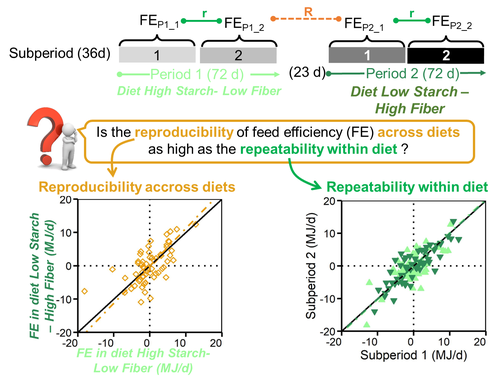
Feed efficiency of lactating Holstein cows was not as repeatable across diets as within diet over subsequent lactation stagesAmelie Fischer, Philippe Gasnier, philippe faverdin https://doi.org/10.1101/2021.02.10.430560A focus on feed efficiency reproducibility and repeatability of dairy cows fed different diets over the lactation stage.Recommended by Alberto Atzori based on reviews by Ioannis Kaimakamis, Angela Schwarm and 2 anonymous reviewersThe topic of feed efficiency is under discussion in the scientific community and several studies pointed out that lactation stage has to be accounted for when estimates of feed efficiency are carried out, especially for genetic ranking of animals and their performances, as highlighted by Li et al. (2017). Other researchers applied a latin square design to test dietary effects across lactation (Ipharraguerre et al. 2002) but this approach cannot be followed out of experimental conditions and particularly does not allow, nowadays, to valorize precision livestock farm data to get phenotypic information from individual animals at farm level. The current manuscript by Fischer, et al. (2022a) describes an experimental trial in which cows were first fed a high starch diet-low fibre then switched over to a low starch diet-high fibre and individually monitored over time. Data were analyzed with the objective to investigate effects within diets and across diets. Since all cows went through the same sequence at the same time it was not possible to completely separate the confounding effect of lactation stage and diet as stated by the authors. However, this manuscript adds methodological discussions and opens research questions especially to the matter of repeatability and reproducibility of feed efficiency of individual animals over the lactation stage. These variables are fundamental to evaluate nutritional traits and phenotypic performances of dairy cows at farm level, as highlighted by a paper of the same first author (Fischer, et al. 2022b) dealing to reproducibility and repeatability with a similar approach. My opinion is that this manuscript gives the opportunity to enlarge the scientific discussions on the calculation of repeatability and reproducibility of feed efficiency of individual animals over time. In particular, as in this study, specific mathematical approaches need to be carried out with the final goal to analyze and valorize precision livestock farm data for cow phenotyping and to propose new methods of feed efficiency evaluations. It also needs complete databases carried out under experimental conditions. In fact it has to be considered that this manuscript makes available to the scientific community all the data and the R code developed for data analysis giving the opportunity to replicate the calculations and propose new advancements in the feed efficiency evaluations of dairy cows. References Fischer A, Gasnier P, Faverdin P (2022a) Feed efficiency of lactating Holstein cows was not as repeatable across diets as within diet over subsequent lactation stages. bioRxiv, 2021.02.10.430560, ver. 3 peer-reviewed and recommended by Peer Community in Animal Science. https://doi.org/10.1101/2021.02.10.430560 Fischer A, Dai X, Kalscheur KF (2022b) Feed efficiency of lactating Holstein cows is repeatable within diet but less reproducible when changing dietary starch and forage concentrations. animal, 16, 100599. https://doi.org/10.1016/J.ANIMAL.2022.100599 Ipharraguerre IR, Ipharraguerre RR, Clark JH (2002) Performance of Lactating Dairy Cows Fed Varying Amounts of Soyhulls as a Replacement for Corn Grain. Journal of Dairy Science, 85, 2905–2912. https://doi.org/10.3168/JDS.S0022-0302(02)74378-6 Li B, Berglund B, Fikse WF, Lassen J, Lidauer MH, Mäntysaari P, Løvendahl P (2017) Neglect of lactation stage leads to naive assessment of residual feed intake in dairy cattle. Journal of Dairy Science, 100, 9076–9084. https://doi.org/10.3168/JDS.2017-12775
| Feed efficiency of lactating Holstein cows was not as repeatable across diets as within diet over subsequent lactation stages | Amelie Fischer, Philippe Gasnier, philippe faverdin | <p> Background: Improving feed efficiency has become a common target for dairy farmers to<br>meet the requirement of producing more milk with fewer resources. To improve feed<br>efficiency, a prerequisite is to ensure that the cows identified... |  | Cattle production, Ruminant nutrition | Alberto Atzori | Anonymous, Ioannis Kaimakamis, Giuseppe Conte, Angela Schwarm | 2021-02-11 08:43:59 | View |
11 Dec 2023
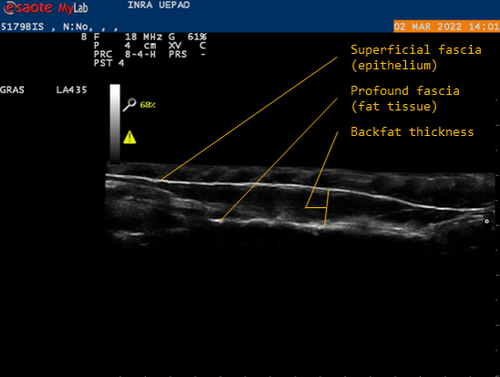
Genetic background of body reserves in laying hens through backfat thickness phenotypingNicolas Bédère, Joëlle Dupont, Yannick Baumard, Christophe Staub, David Gourichon, Frédéric Elleboudt, Pascale Le Roy, Tatiana Zerjal https://hal.inrae.fr/hal-04172576Towards a better optimization of the genetic improvement of chicken breeds: Introduction of simple phenotypic traits related to body composition for easy measurement in the selection programs of laying hens.Recommended by Seyed Abbas Rafat based on reviews by 2 anonymous reviewers based on reviews by 2 anonymous reviewers
In genetic selection, simplistic model of single-trait selection is usually considered, and the response to such approach is estimated using simple models. In practice, however, plant and animal breeders always deal with the selection of several traits, hence making the selection process very complex. Therefore, the simultaneous genetic improvement of several traits has always been one of the goals of livestock, including poultry breeding (Falconer, 1972). Studies that examine the indirect effects of selection on economic traits are eagerly awaited. In this context, the results of the study by Bédère et al., (2023) gives new insights about phenotypic and genotypic relationships between body reserves traits in laying hens. The authors aimed to propose novel data about the genetic architecture of traits related to body fat by measuring a series of phenotypic traits with relatively an easy approach. The authors further aimed to test and validate the phenotyping of backfat thickness as an indicator of the overall fatness of laying hens. Thus, the study allowed providing new evidence regarding the genetic determination of the backfat trait in chicken breeds. The authors first estimated the effect of selection on the residual feed intake (trait x) on the trait of body reserves (trait y). In fact, divergent selection experiments are a fundamental research tool that allow revealing significant amount of data related to the possible span of genetic improvement for traits of interest. Consequently, by analyzing data from a divergent selection experiment, associations have been estimated between a number of feed-dependent traits that have practical use for chicken breeders. Estimation of the correlations between traits is under question in terms of the theory of genetics and their application in multi-trait selection. As a major finding of the study, the observation of a bimodal distribution of backfat in both lines and the heterogeneity of the variances between families allowed suggesting a possible major gene, which could be investigated in future studies using for instance quantitative genetics. Body composition is continually studied in broilers chicken, but this aspect of chicken genetic is more detailed in laying hens. The current findings are worthy to validate using several approaches. In fact, one of the limitations of the study can be related to other statistical models that can be built. For example, the study revealed high correlations between egg production and body weight, thus body weight could be considered as a covariate in regression models. Moreover, the principal trait of selection (based on the residual feed intake) could be considered. References: Falconer, D. S. (1972). Introduction to Quantitative Genetics. Publisher: Ronald Press Company. pp 365. Bédère, N., Dupont, J., Baumard, Y., Staub, C., Gourichon, D., Elleboudt, F., Le Roy, P., Zerjal, T. (2023). Genetic background of body reserves in laying hens through backfat thickness phenotyping. HAL ver. 3 peer-reviewed and recommended by Peer Community in Animal Science. https://hal.inrae.fr/hal-04172576 | Genetic background of body reserves in laying hens through backfat thickness phenotyping | Nicolas Bédère, Joëlle Dupont, Yannick Baumard, Christophe Staub, David Gourichon, Frédéric Elleboudt, Pascale Le Roy, Tatiana Zerjal | <p>In this study, we pursued three primary objectives: firstly to test and validate the phenotyping of backfat thickness as an indicator of the overall fatness of laying hens; secondly, to estimate genetic parameters for this trait; thirdly, to st... |  | Animal genetics, Poultry, Statistical genetics | Seyed Abbas Rafat | 2023-07-27 17:09:10 | View | |
01 Sep 2022
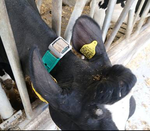
Detecting dairy cows' lying behaviour using noisy 3D ultrawide band positioning dataI. Adriaens, W. Ouweltjes, M. Pastell, E. Ellen, C. Kamphuis https://doi.org/10.5281/zenodo.6627251A novel method to monitor lying behaviour of dairy cows by combining noisy spatial positioning data, time-series segmentation based on statistical changepoints and machine learning classification algorithmRecommended by Eliel Gonzalez-Garcia based on reviews by Kareemah Chopra and John Fredy Ramirez AgudeloUsing on-farm sensors in dairy farming is known to help decision makings and farmer objectives in the monitoring and potential improvement of animal behaviour, health and production performance. However, in indoor positioning systems, data interpretation is complicated by the inaccuracy and noise in the time series, missing data caused not only by sensor failure or the harsh and changing farm environments in which they operate, but also by the animals' specific physiology itself. Thus, working with spatial data has proven challenging mainly due to their enormous heteroscedasticity, which depends on multiple factors such as the cow, the time of the day, the behaviour, factors interfering with the sensor system, etc., for which we cannot account mathematically. Applying purely black-box approaches generally results in insufficient robustness, interpretability and generalisability. With this work, Adriaens et al. (2022) developed a relatively simple and new methodology to monitor the lying behaviour of dairy cows by using noisy spatial positioning data, while combining time-series segmentation based on statistical changepoints and a machine learning classification algorithm. The two-step methodology identifies lying behaviour using an ultra-wide band indoor positioning system. Getting-up or lying-down events were indicated by the accelerometers. Overall classification and lying behaviour prediction performance was above 91% in independent test sets, with a very high consistency across cow-days. The robustness of the algorithm was demonstrated by the fact that both the cow identity-based split and the time-based split performed equally well. The article represents an original contribution for advancing the state of the art in the automated quantification of lying behaviour in dairy cows, aiming to monitor health or animal welfare issues. Future research must be considered however to validate the performance of the model when using different position-measuring technologies, in other farm settings and over a longer period of time.
Reference Adriaens I, Ouweltjes W, Pastell M, Ellen E, Kamphuis C. 2022. Detecting dairy cows' lying behaviour using noisy 3D ultra-wide band positioning data. Zenodo, 6627251, ver. 3 peer-reviewed and recommended by Peer Community in Animal Science. https://doi.org/10.5281/zenodo.6627251
| Detecting dairy cows' lying behaviour using noisy 3D ultrawide band positioning data | I. Adriaens, W. Ouweltjes, M. Pastell, E. Ellen, C. Kamphuis | <p>In precision livestock farming, technology-based solutions are used to monitor and manage<br>livestock and support decisions based on on-farm available data. In this study, we developed<br>a methodology to monitor the lying behaviour of dairy c... |  | Animal behaviour , Mathematical modelling, Precision livestock farming | Eliel Gonzalez-Garcia | 2022-02-28 18:19:37 | View | |
10 Aug 2022

Decreasing the level of hemicelluloses in sow's lactation diet affects the milk composition and post-weaning performance of low birthweight piglets.Francesco Palumbo, Giuseppe Bee, Paolo Trevisi, Marion Girard https://doi.org/10.31220/agriRxiv.2022.00116Varying the hemicellulose content in the diet of lactating sows highlights the importance of early-life interventions for improving health and performance of small piglets during the post-weaning periodRecommended by Florence Gondret based on reviews by Hélène Quesnel and Myriam GrundyOne of the key questions in pig industry nowadays is how health and performance of piglets can be improved by sow nutrition and milk composition. The levels of dietary fibers in sow’s gestation diet have positive effects observed on the litters. However, the composition of dietary fibers and the organization of polysaccharides within the cell wall in the different plants determine their physicochemical properties and, thereby, their behaviour in the gut of the sows and the subsequent physiological response of the animals. Hemicelluloses are polysaccharides constituents of the cell walls of plants, which are fermented in the gut to produce volatile fatty acids (VFA). These VFA can serve as energy source for milk synthesis and can thereby influence the development of suckling piglets. Palumbo and colleagues (1) proposed an original experimental design to compare diets with similar fiber contents but different hemicellulose levels, thanks to varying the sources of fibers used in the dietary formulations. Effects were studied on performance and health of lactating sows and their piglets during suckling period and until post-weaning. The dietary treatments had no effect on the total number of piglets weaned and, consequently, on litter weight at weaning. Milk yield was not influenced by the dietary treatments, but milk composition (lactose content, copper and threonine proportions) was affected by the level of hemicellulose in the maternal diets. With a decreasing hemicellulose level in sow diet, milk lactose content linearly decreased, whereas the copper and threonine contents linearly increased. There was no effect on piglet performance during the lactation period. During the second week of post-weaning, a quadratic increase in the incidence of diarrhoea and the number of days with diarrhoea for suckling piglets was observed with decreasing hemicellulose level in diet. Interestingly, the observed effects were partly different for piglets born with a low body weight. Indeed, there was a linear decrease in the incidence of diarrhoea and days with diarrhoea with decreased hemicellulose level in the maternal diet for those piglets, together with increased growth performance from birth to two weeks post-weaning. The authors postulated that the improved growth performance and the lower incidence of diarrhoea observed in small piglets during post-weaning period may be related to the increased abundance of threonine and copper and increased concentration of total VFA in milk of sows fed a diet with reduced hemicellulose levels. This study confirms the importance of early-life interventions to improve the post-weaning development and health of this sub-population of piglets. Reference (1) Palumbo F, Bee G, Trevisi P, and Girard M. (2022). Decreasing the level of hemicelluloses in sow's lactation diet affects the milk composition and post-weaning performance of low birthweight piglets. agriRxiv 2022.00116, ver 4 (R3), peer-reviewed and recommended by PCI Animal Science. https://doi.org/10.31220/agriRxiv.2022.00116 | Decreasing the level of hemicelluloses in sow's lactation diet affects the milk composition and post-weaning performance of low birthweight piglets. | Francesco Palumbo, Giuseppe Bee, Paolo Trevisi, Marion Girard | <p>Hemicelluloses (HC) are polysaccharides constituents of the cell walls of plants. They are fermented in the gut to produce volatile fatty acids (VFA). The present study investigated the effects of decreasing HC level in sow's lactation diet on ... |  | Pig nutrition | Florence Gondret | 2022-01-21 12:00:22 | View | |
28 Jan 2022
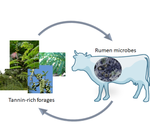
Microbial colonization of tannin-rich tropical plants: interplay between degradability, methane production and tannin disappearance in the rumenMoufida Rira, Diego P Morgavi, Milka Popova, Gaelle Maxin, Michel Doreau https://doi.org/10.1101/2021.08.12.456105Ruminal microbial degradation of tannin-rich tropical plants and methane productionRecommended by Antonio Faciola based on reviews by Todd Callaway and Srinivasan MahalingamRira et al. (2022) evaluated ruminal degradation of tropical tannins-rich plants and the relationship between condensed tannins disappearance and microbial communities. I found this study relevant because a major limitation for tropical plants utilization by ruminants is their potential reduced nutrient digestion. In this study, authors used leaves from Calliandra calothyrsus, Gliricidia sepium, and Leucaena leucocephala, pods from Acacia nilotica and the leaves of Manihot esculenta and Musa spp., which were incubated in situ in the rumen of dairy cows. An in vitro approach was also used to assess the effects of these plants on ruminal fermentation. They observed that hydrolysable and free condensed tannins from all plants completely disappeared after 24 h incubation in the rumen. Disappearance of protein-bound condensed tannins was variable with values ranging from 93% for Gliricidia sepium to 21% for Acacia nilolitica. This demonstrated some potential for selection and improvements in protein digestion. In contrast, fibre-bound condensed tannins disappearance averaged ~82% and did not vary between plants, which was remarkable. The authors noted that disappearance of bound fractions of condensed tannins was not associated with degradability of plant fractions and that the presence of tannins interfered with the microbial colonisation of plants. Each plant had distinct bacterial and archaeal communities after 3 and 12 h of incubation in the rumen and distinct protozoal communities at 3 h. This suggests a great deal of specificity for microbial-plant interactions, which warrants further evaluation to consider also animal contributions to such specificity. Adherent communities in tannin-rich plants had a lower relative abundance of fibrolytic microbes, notably Fibrobacter spp. Whereas, archaea diversity was reduced in high tannin-containing Calliandra calothyrsus and Acacia nilotica at 12 h of incubation. Concurrently, in vitro methane production was lower for Calliandra calothyrsus, Acacia nilotica and Leucaena leucocephala although for the latter total volatile fatty acids production was not affected and was similar to control. Finally, the study demonstrated that the total amount of hydrolysable and condensed tannins contained in a plant play a role governing the interaction with rumen microbes affecting degradability and fermentation. The effect of protein- and fibre-bound condensed tannins on degradability is less important. The major limitation of the study is the lack of animal validation at this stage; therefore, further studies are warranted, especially studies evaluating these plants in vivo. Furthermore, mechanisms associated with plant-microbial specificity, the role played by the host, and more data on nutrient utilization and gas production should be investigated. Nonetheless, this work show interesting microbial colonization and specific plant-microbial relationships that are novel in the ruminal environment. Reference: Rira M, Morgavi DP, Popova M, Maxin G, Doreau M (2022). Microbial colonization of tannin-rich tropical plants: interplay between degradability, methane production and tannin disappearance in the rumen. bioRxiv, 2021.08.12.456105, ver. 3 peer-reviewed and recommended by Peer Community in Animal Science. https://doi.org/10.1101/2021.08.12.456105
| Microbial colonization of tannin-rich tropical plants: interplay between degradability, methane production and tannin disappearance in the rumen | Moufida Rira, Diego P Morgavi, Milka Popova, Gaelle Maxin, Michel Doreau | <p>Condensed tannins in plants are found free and attached to protein and fibre but it is not<br>known whether these fractions influence rumen degradation and microbial colonization.<br>This study explored the rumen degradation of tropical tannins... |  | Animal nutrition modelling, Cattle production, Emissions , Farming systems, Gut microbiology, Microbial ecology, Microbial fermentation, Rumen microbiology, Rumen microbiome , Ruminant nutrition | Antonio Faciola | 2021-08-16 08:56:45 | View | |
06 Sep 2023
Validation of a Radio frequency identification system for tracking location of laying hens in a quasi-commercial aviary systemSabine G. Gebhardt-Henrich, Alexander Kashev, Matthew B. Petelle, Michael J. Toscano https://doi.org/10.1101/2023.02.16.528820Tracking large numbers of hens in aviary housing: validation of a Radio Frequency Identification systemRecommended by Anna Olsson based on reviews by Arjen van Putten and Mona Giersberg based on reviews by Arjen van Putten and Mona Giersberg
With the increasing use of cage-free housing systems for laying hens comes the challenge of monitoring the behaviour of individual hens in large enclosures where they can be not only on the floors but on different levels. The aim of the present study by Gebhardt-Henrich et al., (2023) was to validate a Radio Frequency Identification (RFID) system with the capacity to track a large number of hens for different research and applied purposes where behaviour monitoring is relevant, such as heritability estimates for breeding programs. In a housing system with 225 birds per pens, 26 antennae were placed at different locations. All birds in 5 pens were equipped with a glass tag in a custom-developed leg band. For validation purposes, the behaviour of three hens who could move between two pens was also monitored on video. Equipping these hens with colour-coded backpacks made them identifiable on video. Matching the antennae detection of the focal birds with the behaviour observation showed that the antennae were able to detect a hen on the right tier in > 90% of cases, but that match on antenna level was lower. The limitations of the system are also discussed in this concise methods paper that will be helpful to many researchers interested in tracking laying hens in loose housing systems. Gebhardt-Henrich, S.G., Kashev, A., Petelle, M.B., Toscano, M.J., 2023. Validation of a Radio frequency identification system for tracking location of laying hens in a quasi-commercial aviary system. bioRxiv 2023.02.16.528820. ver. 3 peer-reviewed and recommended by Peer Community in Animal Science. https://doi.org/10.1101/2023.02.16.528820
| Validation of a Radio frequency identification system for tracking location of laying hens in a quasi-commercial aviary system | Sabine G. Gebhardt-Henrich, Alexander Kashev, Matthew B. Petelle, Michael J. Toscano | <p>Cage-free housing is increasingly chosen in Europe, North America, and Australia as an animal-welfare friendly farm system for laying hens. However, hens are kept in large numbers in those systems which makes checking for health and welfare dif... | Animal genetics, Animal welfare | Anna Olsson | 2023-02-17 08:54:51 | View | ||
06 Sep 2019
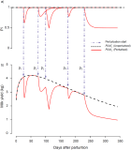
Lactation curve model with explicit representation of perturbations as a phenotyping tool for dairy livestock precision farming.Ben Abdelkrim Ahmed, Puillet Laurence, Gomes Pierre, Martin Olivier https://doi.org/10.1101/661249Developing smart fitting algorithms to identify random perturbations in time-series dataRecommended by Luis Tedeschi based on reviews by Alberto Atzori, Jennifer Spencer and 1 anonymous reviewerThe ability to adequately characterize the lactation curve of livestock is important not only to ensure proper nutrition of the lactating animal but, among many other benefits, it can assist in diagnosing the incidence of diseases, predicting the quantity of milk production, and comparing animals within the herd for managerial strategies such as culling. Eventually, such smart fitting algorithms can lead to improved genetic selection of more productive animals after genetic-unrelated noises are removed from the data, systematically. References [1] Johansson, I. (1961). Genetic Aspects of Dairy Cattle Breeding. University of Illinois Press, Urbana, IL. [2] Nelder, J. A. (1966). Inverse polynomials, a useful group of multi-factor response functions. Biometrics. 22 (1):128-141. doi: 10.2307/2528220 | Lactation curve model with explicit representation of perturbations as a phenotyping tool for dairy livestock precision farming. | Ben Abdelkrim Ahmed, Puillet Laurence, Gomes Pierre, Martin Olivier | <p>Background Understanding the effects of environment on livestock provides valuable information on how farm animals express their production potential, and on their welfare. Ruminants are often confronted with perturbations that affect their per... |  | Lactation biology , Mathematical modelling, Precision livestock farming | Luis Tedeschi | 2019-06-07 09:38:26 | View |
MANAGING BOARD
Karol B Barragán-Fonseca
Mohammed Gagaoua
Rachel Gervais
Florence Gondret
Francois Meurens
Rafael Muñoz-Tamayo
Anna Olsson
Seyed Abbas Rafat
Yuliaxis Ramayo-Caldas









